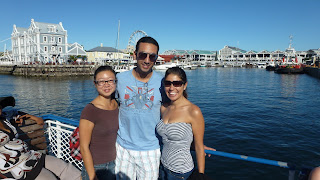“Access” has become the most commonly used word in the Durban Lawyers for Human Rights office. My guess would be that it is also regularly used in other LHR offices as well as other refugee and human rights organizations throughout South Africa
The South African asylum process mandates that an asylum seeker obtain a border transit permit (also known as a Section 23 permit) from the border, which is valid for 14 days. This means that an asylum seeker subsequently has 14 days to approach a Refugee Reception Office, where he or she can submit an asylum application.
The problem is that most asylum seekers who enter South Africa
Recent reports from border towns indicate that authorities, including the South African forces are blindly turning refugees away before they have the opportunity to claim asylum. This is of course not uncommon, as in many developed countries, including Canada, border services agents stand at the gate and check passports before people have the opportunity to disembark an airplane. Yet, with South Africa
After entering the country most asylum seekers eventually approach a Refugee Reception Office to apply for asylum. The problem is that when they do, they rarely have a border transit permit. Authorities have been using this as a reason to refuse access to the asylum process and send people away. In fact, people are being told to return back to the border to get a border transit permit. What is interesting, however, is that the law does not actually require an asylum seeker to have this permit in order to apply for asylum.
This situation is further exacerbated by the Department of Home Affair’s recent refusal to issue border transit permits at some of the busiest ports of entry altogether. It appears that this manoeuvre is part of an overall long-term strategy to move all refugee services to the country’s borders that has also included the closure of the Johannesburg Johannesburg Port Elizabeth
But while the Department of Home Affairs is desperately trying to deal with the mass influx of asylum seekers into South Africa
Pictures from Lawyers for Human Rights' website and Facebook page

























































